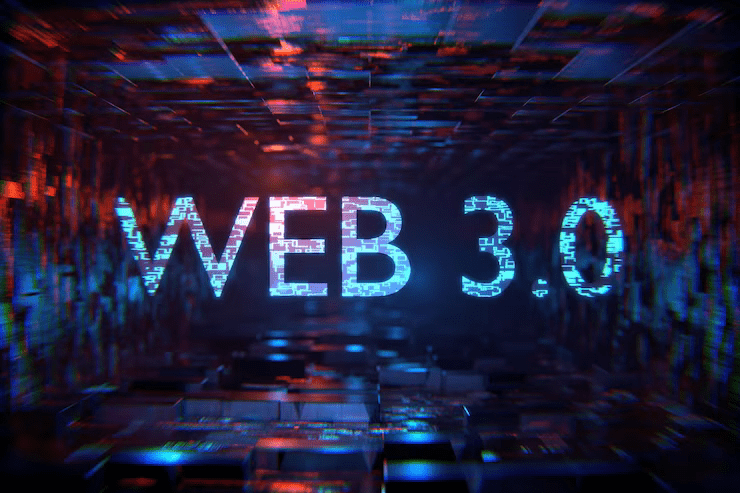
Introduction to Web3 development
In recent years, the term “Web3” has been making waves in the tech and business worlds, promising to reshape the way we interact with the internet and conduct business. But what exactly is Web3, and why is it garnering so much attention? In this introduction to Web3 development, we’ll delve into the basics and explore why it matters to businesses and individuals alike.
What is Web3?
Web3 is the next phase of the internet’s evolution, a decentralized, trustless, and user-centric version of the World Wide Web. To understand Web3, let’s take a brief journey through the history of the web:
- Web 1.0: This was the early, static web, where content was primarily read-only, and users were mere consumers of information.
- Web 2.0: The emergence of interactive websites, social media, and user-generated content marked Web 2.0. It was characterized by increased interactivity and user participation.
- Web3: Web3 is the decentralized web. It’s built on blockchain and other distributed ledger technologies. In this new web era, the control over your online presence, data, and assets is put back into your hands. Centralized intermediaries, like tech giants and social media platforms, are replaced with trustless, decentralized systems. It’s a web where users own their data, digital assets, and online identities.
Key Concepts in Web3
To navigate the world of Web3, it’s essential to understand some fundamental concepts:
- Blockchain: The technology that underpins Web3. It’s a distributed ledger that records transactions and data in a secure, transparent, and tamper-proof way.
- Decentralization: Web3 operates without a central authority. Data and control are spread across a network of nodes, making it resistant to censorship and single points of failure.
- IPFS (InterPlanetary File System): A distributed, peer-to-peer file storage system that enhances content distribution and access in Web3.
In the world of Web3, businesses that adapt and embrace the decentralized, user-centric model stand to gain a competitive edge. In this series on Web3 development, we will explore these concepts and delve into specific use cases, challenges, and opportunities for businesses. Stay tuned to discover how your business can thrive in the Web3 era.
Why Web3 Matters to Businesses
Web3 is not just a technological buzzword; it represents a significant paradigm shift with profound implications for businesses across various industries. Here are the key reasons why Web3 matters to businesses:
- User Control and Data Ownership: Web3 empowers users to have greater control over their data and digital assets. This shift towards self-sovereign identity and data ownership is pivotal for businesses as it fosters trust and provides users with a more secure and personalized experience.
- Improved Transparency and Trust: The blockchain technology that underpins Web3 ensures transparency and immutability. This is particularly important in industries where trust and accountability are paramount, such as supply chain management, finance, and healthcare. By leveraging Web3, businesses can increase transparency and trust in their operations.
- New Revenue Streams: Web3 introduces new avenues for monetization. Non-Fungible Tokens (NFTs) and decentralized finance (DeFi) are two prime examples. Businesses can create and sell NFTs, enabling ownership of digital assets, while DeFi platforms provide opportunities for yield generation and lending, all within a decentralized framework.
- Innovation and Competitive Advantage: Embracing Web3 can lead to innovation within businesses. Startups and projects are emerging across various industries, exploring novel applications of blockchain, smart contracts, and decentralized technologies. Companies that embrace these innovations gain a competitive edge by offering unique, cutting-edge solutions.
- Global Reach and Inclusivity: Web3 has the potential to break down geographical barriers and bring people from around the world together. It opens up new markets and allows businesses to reach a more diverse and global customer base.
- Environmental Sustainability: Some Web3 technologies are designed to be more environmentally friendly. This aligns with the growing demand for sustainable business practices and can be a selling point for environmentally conscious consumers.
Web3 is not merely a technological evolution but a transformative force that touches upon user control, business processes, trust, innovation, and revenue generation. As businesses continue to explore the potential of Web3, those that adapt and incorporate these decentralized technologies are better positioned to thrive in an increasingly digital and decentralized world.
Web3 and Customer Engagement
Web3 technologies have the potential to significantly transform customer engagement by introducing new and innovative ways for businesses to interact with their customers. Here’s how Web3 can impact customer engagement:
- User-Centric Data Ownership: In a Web3 environment, users have greater control over their data and digital assets. This shift from centralized data ownership to user-centric data ownership builds trust and allows customers to feel more in control of their online presence.
- Enhanced Personalization: Web3 technologies enable businesses to access user data (with user consent) from various sources while respecting data privacy. This information can be used to offer highly personalized experiences and recommendations.
- NFTs and Digital Collectibles: Non-Fungible Tokens (NFTs) have become a popular use case in Web3. Brands and businesses can issue NFTs to customers as digital collectibles or limited-edition digital assets. These NFTs can represent loyalty rewards, exclusive content, or even real-world products.
- Blockchain-Based Loyalty Programs: Businesses can create loyalty programs using blockchain technology, where users earn tokens or rewards for their loyalty. These tokens can be traded, redeemed, or used within the ecosystem, creating a more engaging and interactive loyalty experience.
- Gamification: Gamifying customer interactions is an effective way to engage customers. Web3 enables businesses to create gamified experiences with blockchain-based rewards. For example, completing certain actions could earn users tokens or NFTs.
- Content Monetization: Content creators and artists can use Web3 to monetize their content through NFTs and token rewards. Customers can directly support their favorite creators and receive unique, rare digital content.
In the Web3 era, businesses have the opportunity to rethink customer engagement strategies, focusing on decentralization, user control, and innovative methods to reward and interact with customers. By embracing these new technologies and approaches, businesses can foster deeper and more meaningful relationships with their customers, ultimately driving loyalty and brand growth.
The Future of Business in a Web3
The emergence of Web3 is poised to reshape the business landscape in profound ways. This decentralized, blockchain-driven paradigm promises to disrupt traditional business models and introduce new opportunities and challenges. Here’s a glimpse into the potential future of business in a Web3 world:
Decentralized Organizations:
- These are entities governed by smart contracts and blockchain technology, allowing for transparent, trustless, and community-driven decision-making.
- Businesses may adopt DAO structures to involve stakeholders, including customers and employees, in governance, decision-making, and profit-sharing.
User-Centric Data Ownership:
- Web3 gives individuals control over their personal data, allowing them to own, manage, and monetize it.
- Businesses may need to seek explicit user consent to access their data, fostering trust and transparency.
Tokenization of Assets:
- Assets, such as real estate, artwork, and intellectual property, can be tokenized on blockchain networks. This can create more accessible and liquid markets for various assets.
- Businesses may issue tokens representing ownership or shares in their companies, unlocking new forms of investment and funding.
DeFi Integration:
- Businesses can leverage DeFi to access capital, lend assets, and offer novel financial products.
- Companies may incorporate DeFi solutions to enhance their financial operations and offer competitive services to customers.
NFT Economy:
- Non-Fungible Tokens (NFT development) are gaining traction for ownership of digital and physical assets, including art, collectibles, and virtual real estate.
- Businesses might monetize NFTs by creating unique digital products, rewards, and experiences for their customers.
Decentralized Social Networks:
- Decentralized social media platforms offer greater user control over data and interactions, incentivizing users with tokens.
- Businesses might adopt decentralized social platforms to interact with customers in more transparent and decentralized ways.
Web3 Marketing and Engagement:
- Businesses might develop new marketing strategies that incorporate blockchain rewards, NFT promotions, and community engagement through tokens.
- Customer engagement and loyalty may be enhanced by gamified experiences and exclusive digital assets.
Environmental Considerations:
- Web3 technologies are increasingly focusing on sustainability. Businesses may adopt eco-friendly blockchain networks to align with sustainability goals and consumer preferences.
The future of business in a Web3 world is promising but also complex and uncertain. Businesses that embrace the opportunities presented by Web3 while adapting to the challenges and changes will be better positioned to thrive in this transformative era. Customer-centric, decentralized, and blockchain-oriented strategies may become essential for future success.
Conclusion
In conclusion, Web3 represents a transformative and exciting evolution of the digital landscape with profound implications for businesses and individuals. It’s a paradigm shift that offers opportunities for greater decentralization, user control, and innovation, as well as challenges related to regulation and risk management.
Web3 development tools, smart contracts, NFTs, and decentralized applications have become fundamental building blocks in this emerging ecosystem. Businesses and individuals are exploring ways to harness the potential of Web3 for improved customer engagement, data ownership, transparency, and unique monetization strategies.
The future of business in a Web3 world promises to be shaped by decentralized organizations, user-centric data ownership, tokenization of assets, DeFi integration, the NFT economy, supply chain transparency, and more. It’s a future where blockchain technology and smart contracts play central roles in fostering trust, transparency, and innovation.
However, it’s crucial to approach Web3 investments and strategies with careful consideration, understanding the risks, and staying informed about the evolving regulatory environment. The decentralization and innovation inherent in Web3 have the potential to revolutionize industries and redefine business practices.
As Web3 continues to develop, staying informed, embracing new technologies, and adapting to the changing landscape will be key to thriving in this exciting and dynamic future of business. The Web3 era is an opportunity to reenvision the digital world, putting control and ownership back into the hands of individuals, and creating more open and equitable systems for all.

